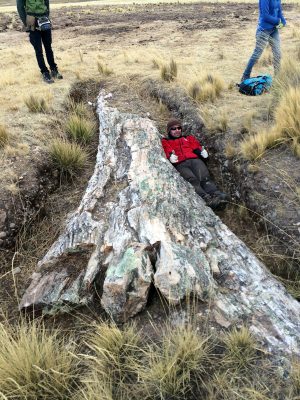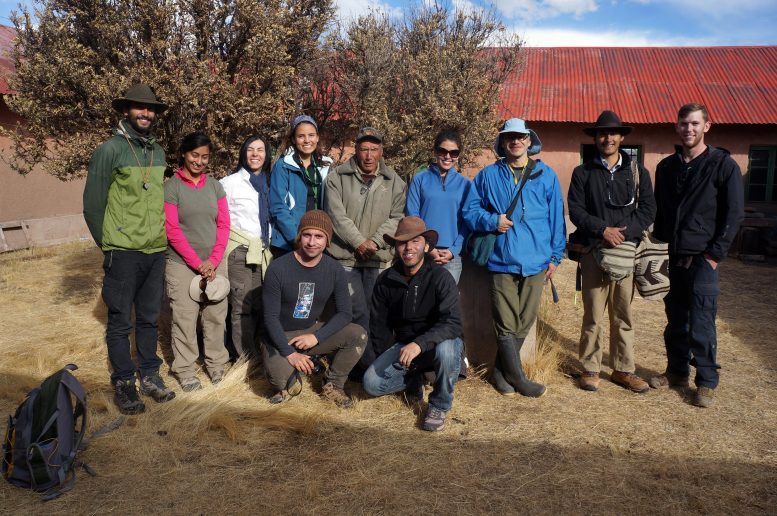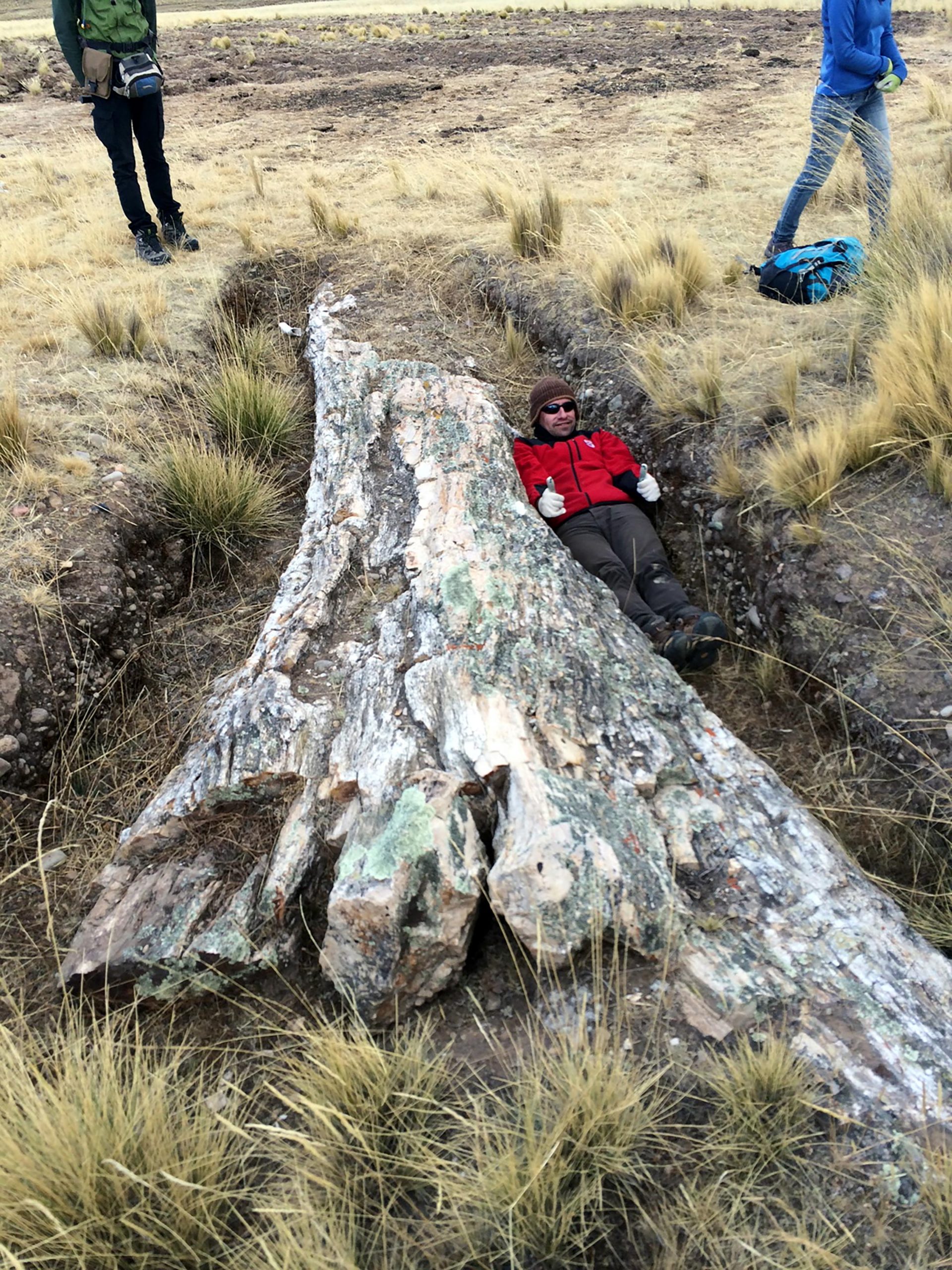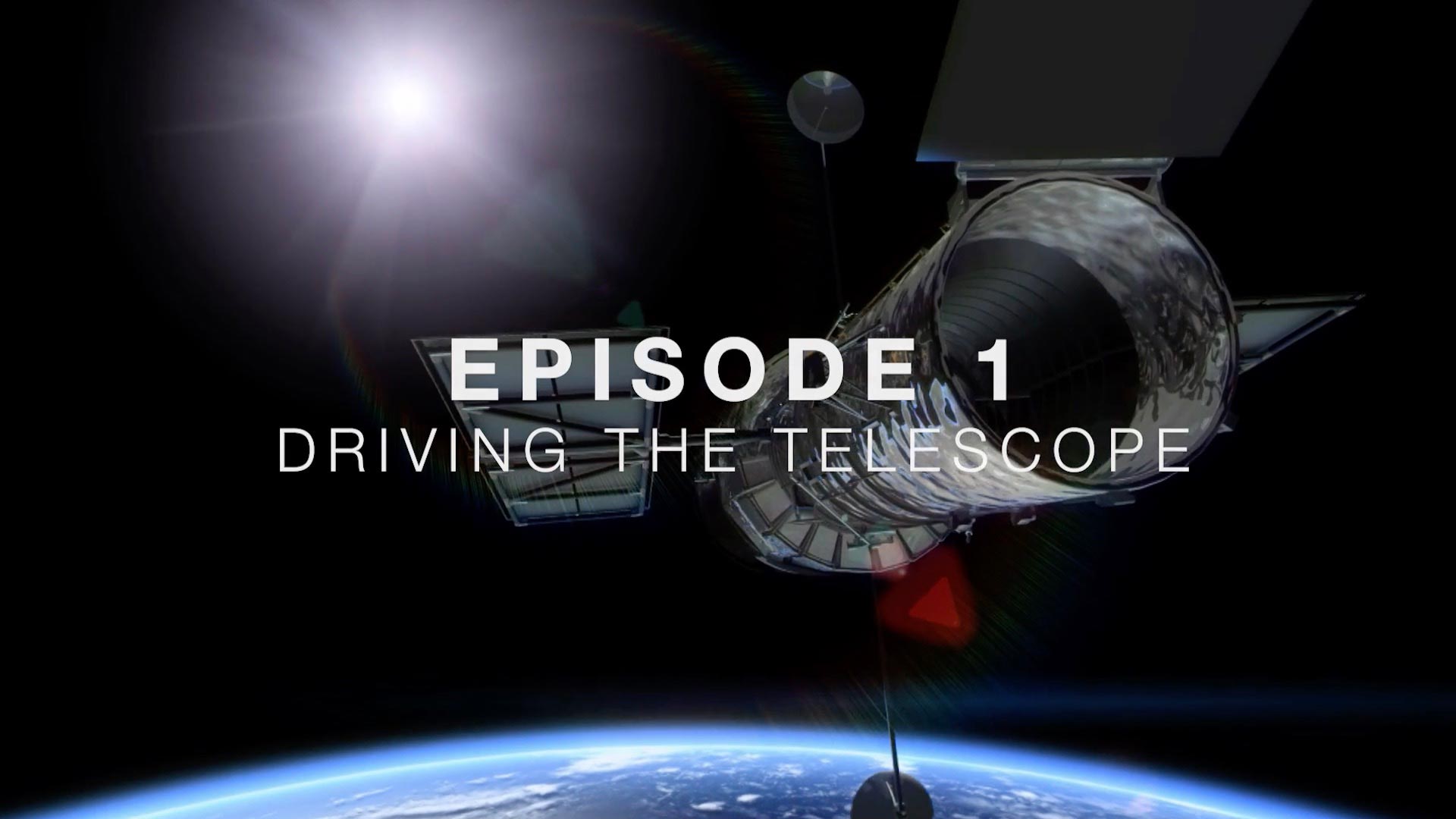Caption: Left to right: Florentino Tunquipa, who discovered and excavated the fossil tree on his land, Rodolfo Salas Gismondi, Carlos Jaramillo, Julia Tejada, Federico Moreno and Camila Martínez. San Miguel Parish, Espinar Parish, Cusco Department, Peru. 2014. Photo credit: Rodolfo Salas Gismondi
On an expedition to the central Andean plateau, researchers from the Smithsonian Tropical Research Institute (STRI) and colleagues were amazed when they found a giant fossil tree buried in the cold, grassy plain. The plant fossil record of this high-altitude location in southern Peru contains dramatic memories of the fact that the Andes’ environment has changed dramatically over the past 10 million years, but not in the way past climate models suggest. The results of the expedition are presented in the diary Advances in science.

The paleontologist Edwin Cadena poses next to a huge, petrified (permineralized) tree on the Peruvian central plateau. Photo credit: Carlos Jaramillo, Smithsonian Tropical Research Institute
“This tree and the hundreds of fossil wood, leaf and pollen samples we collected on the expedition show that the ecosystem was wetter during its lifetime – even wetter than the predicted climate models,” said Camila Martinez, a fellow at STRI who recently received her PhD from Cornell University. “There is probably no other modern ecosystem like it because the temperatures were higher than when these fossils were deposited 10 million years ago.”
The anatomy of the petrified (permineralized) wood that the researchers found is very similar to today’s wood anatomy in tropical forests at low altitude. In fact, the altitude was probably only 2,000 meters above sea level at the time.
But this ecosystem didn’t last long. Today the dry high mountain plateau is 4,000 meters above sea level.
Five-million-year-old fossils from the same areas confirmed that the Puna ecosystem that now dominates the high mountain plateaus of the Andes was born: the younger pollen samples were mostly from grasses and herbs, not trees. The leaf material came from ferns, herbs, and shrubs, indicating that the plateau had already risen to its current height.
“The fossil record in the region says two things: Both elevation and vegetation have changed dramatically in a relatively short period of time, which supports a hypothesis that suggests that the region’s tectonic uplift occurred in rapid bursts,” said Carlos Jaramillo, STRI employee scientist and project manager.

Team visits Crisoldo Cárdenas, who is known in the region for his fossil finds. San Miguel Parish, Espinar Parish, Cusco Department, Peru. 2014. From left to right: Federico Moreno, Nandini Kar, Maria Isabel Vélez, Crisoldo Cárdenas, Julia Tejada, Carlos Jaramillo, Gustavo Ballén, Drew Lubiniecki Below: Edwin Cadena, Rodoldo Salas Gismondi. Photo credit: Rodolfo Salas Gismondi
“The Andean Elevation played an important role in shaping the climate in South America, but the relationship between the rise of the Andes, local climate, and vegetation is still not well understood,” Martinez said. “By the end of this century, changes in temperature and atmospheric carbon dioxide concentration will return to what they were 10 million years ago. Understanding the discrepancies between climate models and data based on the fossil record helps us enlighten the driving forces that control the current climate of the Altiplano and ultimately the climate on the South American continent.
###
Reference: “Neogene rainfall, vegetation and altitude history of the central Andean plateau” by C. Martínez, C. Jaramillo, A. Correa-Metrío, W. Crepet, JE Moreno, A. Aliaga, F. Moreno, M. Ibañez -Mejia and MB Bush, August 28, 2020, Advances in science.
DOI: 10.1126 / sciadv.aaz4724
The authors include: STRI; Cornell University; CNRS, EPHE, IRD, Montpellier; Universidad Nacional Autónoma de México; Museo de Historia Natural, Lima, Peru; University of Rochester, Rochester, New York; and the Florida Institute of Technology.



